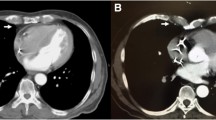Abstract
Purpose
To study the learning curve and outcomes of the first 100 cases of minimally invasive cardiac surgery (MICS) coronary artery bypass grafting (CABG) performed at our center.
Methods
From January 2017 to November 2019, a total of 100 patients underwent CABG via left anterior thoracotomy approach. We have studied the operative times within the MICS CABG patients to analyze our learning curve. We also studied the postoperative outcomes and compared these with those of patients who underwent sternotomy during the same period.
Results
The mean age was 59.33 ± 9.95 (range 37–82) years. The numbers of males and females were 72 and 28 respectively. The preoperative average ejection fraction (EF) was 51.08 ± 9.75%. All these patients underwent CABG via left thoracotomy approach, after satisfying the exclusion criteria. All patients received left internal mammary artery (LIMA) to left anterior descending (LAD) as a standard graft, with the radial artery and saphenous vein being the next alternative conduits. The average length of the incision was 6.06 ± 0.45 cm. Only 2 cases were done on pump. The average number of grafts per patient was 2.33 ± 0.92. The mean operative time was 132.40 ± 11.56 min. The mean duration of ventilation was 4.79 ± 1.90 h and average intensive care unit (ICU) stay was 2.62 ± 0.84 days. There was one conversion and no mortalities in our study. We had analyzed our operative times and noticed a significant reduction after the first 20 cases, which was our learning curve.
Conclusion
MICS CABG can be performed for multivessel disease with the same comfort as for a single or a double vessel disease, once the learning curve has been achieved. Only significant difference from the sternotomy approach was noted in the longer operative times for MICS CABG during the learning curve, and not thereafter. Significant benefits of MICS over sternotomy were noticed in the immediate postoperative parameters like duration of ventilation, mean drainage, postoperative pain, ICU stay, and hospital stay, with no difference in postoperative adverse events.





Similar content being viewed by others
References
Dieberg G, Smart NA, King N. Minimally invasive cardiac surgery: a systematic review and meta-analysis. Int J Cardiol. 2016;223:554–60.
Langer NB, Argenziano M. Minimally invasive cardiovascular surgery: incisions and approaches. Methodist Debakey Cardiovasc J. 2016;12:4–9.
Rodriguez M, Ruel M. Minimally invasive multivessel coronary surgery and hybrid coronary revascularization : can we routinely achieve less invasive coronary surgery ? Methodist DeBakey Cardiovasc J. 2016;12:14–9.
Malik V, Jha AK, Kapoor PM. Anesthetic challenges in minimally invasive cardiac surgery : are we moving in a right direction ? Ann Card Anaesth. 2016;19:489–97.
Une D, Lapierre H, Sohmer B, Rai V, Ruel M. Can minimally invasive coronary artery bypass grafting be initiated and practiced safely? A Learning Curve Analysis. Innovations. 2013;8:403–9.
Kieser TM, Taggart DP. The use of intraoperative graft assessment in guiding graft revision. Ann Cardiothorac Surg. 2018;7:652–62.
Lapierre H, Chan V, Sohmer B, Mesana TG, Ruel M. Minimally invasive coronary artery bypass grafting via a small thoracotomy versus off-pump : a case-matched study. Eur J Cardiothorac Surg. 2011;40:804–10.
Andrawes PA, Shariff MA, Nabagiez JP, et al. Evolution of minimally invasive coronary artery bypass grafting learning curve. Innovations. 2018;13:81–90.
Farid S, Ali JM, Stohlner V, et al. Long-term outcome of patients undergoing minimally invasive direct coronary artery bypass surgery, a single-center experience. Innovations. 2018;13:23–8.
Zeff RH, Kongtahworn C, Iannone LA, et al. Internal mammary artery versus saphenous vein graft to the left anterior descending coronary artery : prospective randomized study with 10-year follow-up. Ann Thorac Surg. 1988;45:533–6.
Nambala S. Minimally invasive total arterial off-pump coronary revascularization: a reproducible technique. Turk J Thorac Cardiovasc Surg. 2019;27:455–7.
Lemma M, Atanasiou T, Contino M. Minimally invasive cardiac surgery-coronary artery bypass graft. Multimedia manual of cardiothoracic surgery: MMCTS / European Association for Cardio-Thoracic Surgery. https://doi.org/10.1093/mmcts/mmt007 published online 29 June 2013.
Barsoum EA, Azab B, Shah N, et al. Long-term mortality in minimally invasive compared with sternotomy coronary artery bypass surgery in the geriatric population (75 years and older patients). Eur J Cardiothorac Surg. 2015;47:862–7.
Walther T, Falk V, Metz S, et al. Pain and quality of life after minimally invasive versus conventional cardiac surgery. Ann Thorac Surg. 1999;67:1643–7.
Hillis LD, Smith PK, Anderson JL, et al. 2011 ACCF / AHA guideline for coronary artery bypass graft surgery : a report of the American College of Cardiology Foundation / American Heart Association Task Force on Practice Guidelines. Circulation. 2011;124:e652–735.
Puskas JD, Halkos ME, DeRose JJ, et al. Hybrid coronary revascularization for the treatment of multivessel coronary artery disease: a multicenter observational study. J Am Coll Cardiol. 2016;68:356–65.
Funding
Nil
Author information
Authors and Affiliations
Corresponding author
Ethics declarations
Ethical committee approval
This study was approved by the institutional ethical committee.
Conflict of interest
The authors declare that they have no conflict of interest.
Informed consent
Individual consents were waived off by the ethics committee.
Human and animal rights statement
All stipulations under the Helsinki declaration 1964 were complied with. No animal studies were carried out.
Additional information
Publisher’s note
Springer Nature remains neutral with regard to jurisdictional claims in published maps and institutional affiliations.
Rights and permissions
Springer Nature or its licensor (e.g. a society or other partner) holds exclusive rights to this article under a publishing agreement with the author(s) or other rightsholder(s); author self-archiving of the accepted manuscript version of this article is solely governed by the terms of such publishing agreement and applicable law.
About this article
Cite this article
Rajput, N.K., Kalangi, T.K.V., Andappan, A. et al. MICS CABG: a single-center experience of the first 100 cases. Indian J Thorac Cardiovasc Surg 37, 16–26 (2021). https://doi.org/10.1007/s12055-020-01048-2
Received:
Revised:
Accepted:
Published:
Issue Date:
DOI: https://doi.org/10.1007/s12055-020-01048-2




